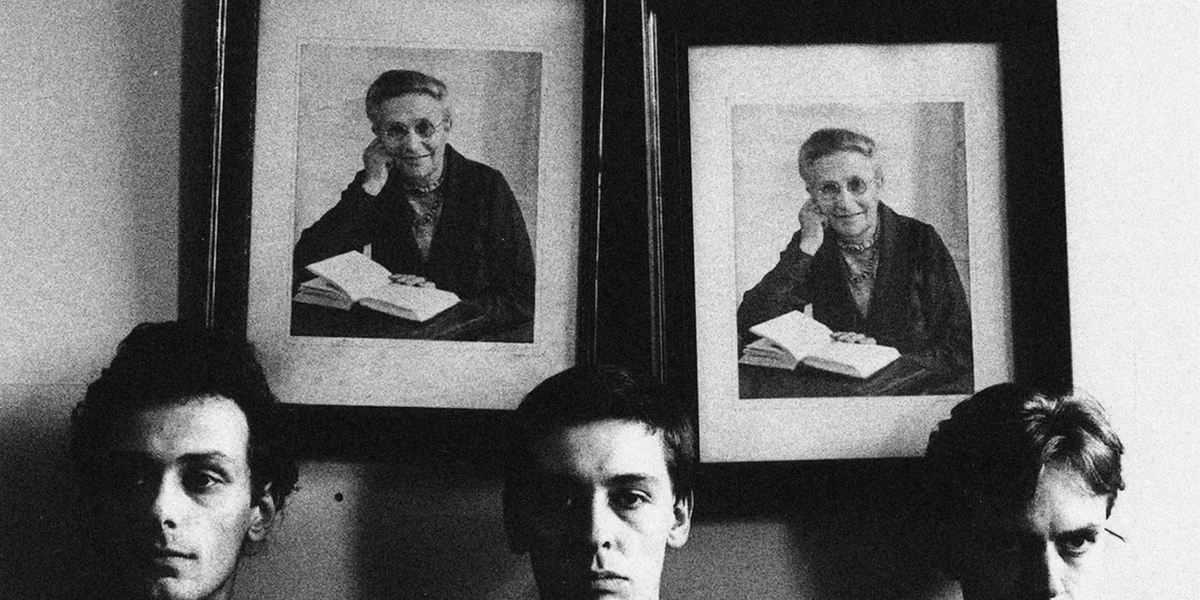Given the shadowy avant-gardism of their self-titled debut a year earlier, it may come as a bit of a surprise to find how bright This Heat sounded on this 1980 12″ EP. In truth, Hayward and Bullen had both been members of a progressive rock band associated with the Canterbury scene in the early 1970s, so it was not necessarily surprising to hear them whip out something close to a straight-up rocker. That same lineage, of course, also formed the root from which sprouted a certain degree of This Heat’s loose improvisational and experimental style.
The title track lays out its stall overtly: “Here’s a song about the sunshine, dedicated to the sunshine.” But the energy they’re working with owes more to the sphere of hot plasma pulsing at the center of our galaxy than it does to pastoral cheeriness like the Beatles’ “Here Comes the Sun”. The song spins out for a non-chart-friendly eight minutes, welding together three movements that are essentially different ideas bound only by the skill exhibited by the three musicians in making the transitions credible rather than choppy. As on the first album, there’s a willingness to flood foreground and background with sonic details, especially in the lengthy midsection, where a plethora of field recordings and effects gradually rise until they stand shoulder-to-shoulder with the main instruments. When the riff and rhythm settle into repetition – resembling, or perhaps actually, a tape loop – attention switches to playground chatter, echoing percussion, and electronic tones.
Perhaps the song is not so much a deviation from the band’s self-titled debut as it is a continuation of the twisted take on rock tropes visible on the “The Fall of Saigon”. “Health and Efficiency” does sound like a legitimate rock song for the first few minutes where strong riffs are pitched against a rough-handed strum, then rammed headfirst into a neat break where the drums slam full force and the guitars surge up and over. While expressed in a chipper everyman style, the lyrics continue to err toward the poetic with repeated invocations of “enthusiasm will energize” paired with one-word actions, body parts, characteristics. In truth, many of the words are only partly audible, another merry refusal to play the pop game.
Sonic Youth certainly owe something to the front-end song/backend improvised collapse adopted here by This Heat. The song falls apart, and the guitar work becomes a series of roughly cut off and jerky phrases, plus the aforementioned effects and keyboard punctuation, over a drum shuffle that sounds manipulated. The final minute-and-a-half commences with a cleverly dysfunctional changeover, the spark and crackle of instruments fading out over a couple of stray notes. The audible yanking of a volume knob turned up on a loose two-chord strum, which ushers in a live group improvisation rekindling dying embers of the initial song.
By contrast, “Graphic/Varispeed” is a million miles away from any attempt at pop, or punk, or rock. A dystopic drone piece, the song elides, with blunt obviousness, a series of different tones, driving them up and down in pitch. The strategy played out across just over eleven minutes is to alternate between phases in which two drones proceed in harmony versus moments where they work against one another.
There are the overt shifts – from 1.20 to 1.45, for example, where the dial drives everything lower and lower then cranks all the way back up again. Then there are the subtleties – the moment around 3.30 where the drones pull apart, and then both settle at high pitch before the listener is suddenly enveloped in an enervating and sluggish spell where the chest feels heavy and time crawls. The result resembles Steve Reich’s early tape experiments, but with the human hand made far more audible, the quixotic decision-making that whips a dial-up or down at a particular moment, or at 7.35 forces it to a point where ears throb at the pressure. The cleverness lies in giving the simultaneous impression of immobility and constant motion, in forcing the false linear experience of time to give way to unrepeatable moments that conjure the memory of many others. I found myself darting back and forth between the first minute and the final two because I was sure that, in their relative stasis, maybe a tone had repeated, only to find significant difference even in the most peaceable moments.


